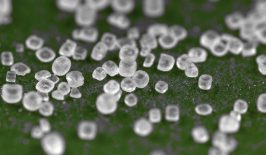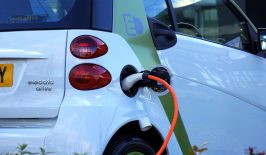Each year, approximately 7.2 billion hens lay around 1,320 billion eggs – providing the basis of omelettes and cakes all over the world. However, cracking all those eggs also results in a whole heap of egg shells – with the vast majority finding their way into landfills.
In fact, the US alone drumps around 150,000 tons of egg shells into the trash each year. As well as placing additional pressure on landfills – many of which are are already approaching capacity – this also results in increased emissions from garbage vans. What’s more, many landfill operators do not like picking up egg shells as their membranes end up attracting rats and vermin.
So, what if we could do something else with all those ‘useless’ egg shells? Well, a German university has discovered they can actually be used to store electricity – adding a new meaning to the phrase ‘battery farming’.
Cracking the Electro-Egg Code
A team at the Helmholtz Institute Ulm (HIU) discovered that eggshells exhibit promising electrochemical qualities which actually make them ideal as a cost-effective lithium ion capacitor. Eggshells are made up of around 95 percent calcium carbonate (CaCO3), as well as protein-rich membranes which are often extremely difficult to remove. However, when ground up into a powder, the high calcium content of the egg shells allowed them to store lithium well. In turn, this lithium rich eggshell powder can then be mixed with a conductive material to function as an electrode against a metallic lithium anode in a non-aqueous electrolyte – or, in other words, as a battery.
The eggshell battery survived over 1000 charging and decharging cycles, maintaining a capacity of around 92 percent. Although this was the first time biowaste had been used as an electrode, Professor Maximilian Fichtner of the HIU explained that new technological applications are increasingly being found for biological material, stating:
“Surprisingly, there are always new examples in which natural substances have good to very good prerequisites for producing materials for electrochemical storage.”
The research team will now embark on additional research to further understand the electrochemical properties of the eggshells and improve their performance. The end goal is to produce a reliable electrical storage device that can replace traditional lithium batteries.
However, this isn’t the only thing eggshells are good for – in fact you should think twice about simply throwing them in the trash can. For example, dried and crushed eggshells can work great as a fertiliser, providing a boost to the sulphur, calcium, phosphorus and potassium levels of your plants. When added to compost, the shells’ calcium can also reduce its acidity, improving its quality.
Eggshells are also used by big business for a variety of purposes, including as food fortifiers, paper pulp substitutes and in the pharmaceutical industry. In fact, eggshells could earn you up to 100 USD per ton.
The Environmental Impact of Eggs
However, there are also environmental and ethical concerns with the industry that produces eggs – and eventually eggshells. For starters, hundreds of millions of male chicks are shredded each year, as it uneconomical to grow them into adults. Although much of this shredded chick is then turned into animal for other livestock, it is also an example of wasteful and unethical trade practices.
A recent Spanish study by the University of Oviedo also looked at how the egg industry affected a wide spectrum of environmental issues, including “ozone depletion, climate change, terrestrial acidification, human toxicity, and land occupation.” They discovered that the chicken feed provided to battery farmed hens contributed to an increase in land and water toxicity.
Furthermore, elder hens are often replaced with younger ones to increase egg yield, once again resulting in waste and the unnecessary killing of older animals. The study concluded that increasing the quality and duration of life of the hens would reduce this waste and ultimately the environmental impact of eggs.
Despite these criticisms, things are also improving in some areas. Although some nations such as Spain still have a very high percentage of their egg laying hens caged, the average across the EU is now around 40 percent – a figure which has dropped in recent years due to animal welfare concerns. Additionally, new technology – such as DNA gender testing – could help reduce the number of male chicks killed – as well reduce overall resource use – in the future.





